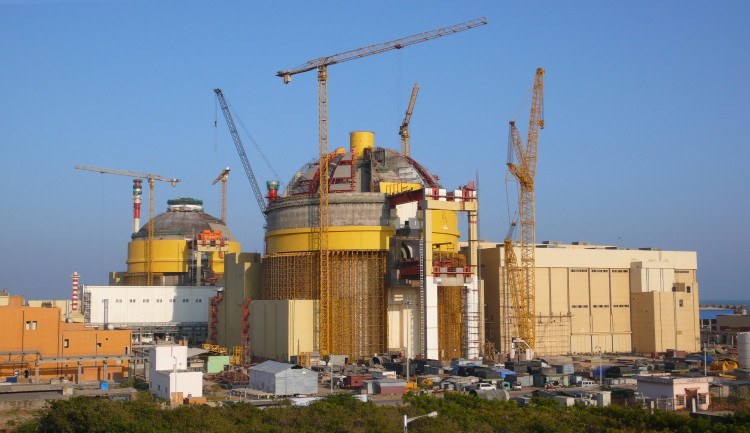Nuclear power is projected to continue expanding globally in the coming years, even as the pace of growth slows amid competition from low fossil fuel prices and renewable energy sources, according to an IAEA study released today.
Each year in Energy, Electricity and Nuclear Power Estimates for the Period up to 2050, the IAEA presents its projections of the world’s nuclear power generating capacity. The publication is now in its 36th edition.
“Nuclear energy, in the long run, will continue to play an important role in the world’s energy mix,” said IAEA Deputy Director General Mikhail Chudakov, Head of the Department of Nuclear Energy. “With populations and demand for electricity growing, nuclear power can help ensure reliable and secure energy supplies while reducing greenhouse gas emissions. In other words, nuclear power can help lift millions of people out of energy poverty while also combatting climate change.”
The new projections indicate a slowing in nuclear power growth, in keeping with the trend since the 2011 Fukushima Daiichi accident. Nuclear power generating capacity is projected to expand by between 1.9% and 56% by 2030, compared with the previous estimate of between 2.4% and 68% from last year. Uncertainty related to energy policy, licence renewals, shutdowns and future constructions accounts for the wide range. The projections from 2030 to 2050 involve greater degrees of uncertainty.
Developed by world experts who gather each spring at the IAEA, the projections take into account developments through April 2016. The low case, designed to produce “conservative but plausible” estimates, assumes a continuation of current market, technology and resource trends with few changes to policies affecting nuclear power. The high case assumes current rates of economic and electricity demand growth, particularly in Asia, will continue. It also envisages a bigger role for nuclear power in assisting Member States on meeting their commitments to reduce greenhouse gas emissions under last year’s Paris Agreement on climate change.
Over the short term, several factors are weighing on the growth prospects of nuclear power. These factors include low prices for natural gas, falling costs for renewables, lack of market signals for low-carbon energy, and a sluggish global economy. Heightened safety requirements introduced after the Fukushima accident and the deployment of next generation technologies with advanced safety systems have also contributed to delays.
Reactor Retirements
The world’s nuclear reactor fleet is also ageing, with more than half of the 450 reactors currently in operation over 30 years old. While the low projections show only modest capacity growth, the need to replace scores of old reactors means that “total new capacity constructed will be much greater than the apparent net increase,” according to the report. “The low case, which essentially shows no increase in the installed capacity, assumes some 150 GW(e) of new capacity built over the next 15 years.”
According to the projections, the world’s nuclear power generating capacity is seen expanding to 390.2 GW(e) by 2030 in the low case from 382.9 GW(e) last year, while in the high case it’s projected to rise to 598.2 GW(e). One gigawatt is equal to one billion watts of electrical power.
The Far East will see the biggest expansion, especially in China and the Republic of Korea. In the low case, capacity in that region is seen growing to 132.2 GW(e) by 2030 from the current 93.8 GW(e). In the high case, capacity is projected to expand to 215.5 GW(e).
India is leading the expansion in the Middle East and South Asia, where capacity is seen at 27.7 GW(e) by 2030 in the low case from 6.9 GW(e) in 2015, rising to 47.7 GW(e) in the high case.
Eastern Europe presents a mixed picture. The region includes Russia, with seven reactors under construction, as well as Belarus, which is building its first two units. The low case estimates regional capacity at 49.9 GW(e) by 2030, down slightly from the current 50.5 GW(e), while capacity increases to 75.7 GW(e) in the high case.
Western Europe risks the biggest decline. With Germany phasing out nuclear power in response to the Fukushima accident, the low projections reflect a decrease in regional capacity to 77 GW(e) by 2030 from the current 112.1 GW(e). The high projections show a decline to 111.8 GW(e).
North American capacity is also seen falling in the low case to 92.5 GW(e) by 2030 from the current 112.7 GW(e). The high case estimates an increase to 126 GW(e).


